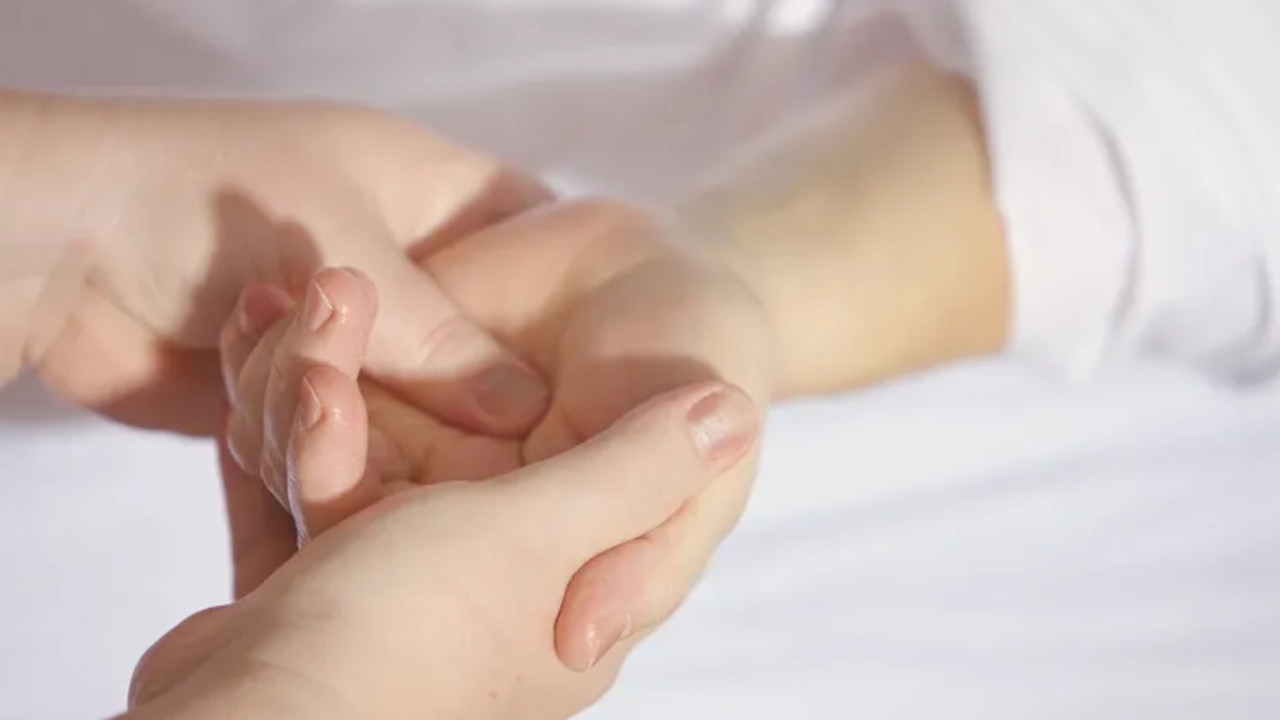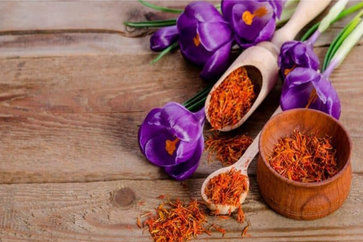Marma Therapy: Origin, Procedures, Applications and Benefits
Ayurveda, the ancient system of natural healing, embodies a holistic philosophy that addresses the well-being of the mind, body, and spirit to achieve total wellness. This profound wisdom is encapsulated in the fundamental concept and composition of “marma.”
Marma represents an age-old understanding that encompasses not only anatomical features but also the locations of the three subtle tridoshas—Prana, Ojusa (soma), and Tejas (Agni). These tridoshas are intricately connected to the three gunas of sattva, raja, and tamas, which represent the mental and emotional aspects of our being (manas contents).
Additionally, Marma acknowledges the presence of the soul or life force, known as “bhutatma,” recognizing the spiritual dimension of our existence. The wisdom of Marma and Marma Chikitsa (Therapy) is deeply rooted in ancient Ayurvedic texts such as the “Sushruta Samhita” and “Siddha.”
Marma Chikitsa refers to the manipulation or stimulation of Marma points in the treatment of various ailments. It is a practice that aligns with Ayurveda’s holistic principles, aiming to restore balance and harmony in the mind, body, and spirit.
What is Marma Therapy?
Marma Therapy is an alternative healing technique aimed at restoring balance within the body, mind, and spirit. It offers a holistic approach to treating various ailments and promoting overall well-being.
Within our bodies, there exist specific points known as energy centers or “varmams.” According to Siddha philosophy, every living being possesses a vital life force called “Uyir Sakthi.” These varmams are considered centers for enhancing and channeling this life force.
Due to their immense significance, these points are located deep within the body and are protected by layers of tissues, making them challenging to access.
In Marma Therapy, the manipulation of these vital points is central to the practice, as it is believed to have the potential to bring about significant healing and balance to one’s physical and energetic systems.
Importance of Marmas
The significance of Marmas in traditional medical practices is profound. In the context of Salya Tantra (surgery), Marmas occupy a substantial portion, indicating their crucial role in the realm of medicine.
It is emphasized that when an injury occurs to any of the Marmas, the consequences are dire—often resulting in the person’s demise within a short span, typically seven days from the time of injury.
Furthermore, even if a person manages to survive an injury to these vital Marmas, a lasting impact is almost certain. Such injuries can lead to deformities of the affected organ, which may persist despite the individual’s survival.
This underscores the critical nature of Marmas and the imperative need for judicious and skillful medical intervention when injuries occur.
The understanding and careful handling of Marmas are vital not only for preventing fatalities but also for preserving the integrity and function of the body’s organs.
The History and Origin of Marma Therapy
Tracing the roots of Marma Therapy reveals an intriguing history. It is said that this knowledge was originally shared by Lord Shiva with his wife Parvathi, who, in turn, imparted it to her son Murugan, thus initiating the legacy of the marma system.
This ancient wisdom was later passed down to the Tamil sage Agastya, who further illuminated his students with its secrets. One significant historical reference to Marma Therapy can be found in the ancient textbook of medicine known as the “Sushruta Samhita,” which dates back to the 4th century.
This text extensively discusses Varma Kalai, shedding light on its constructive and destructive potentials. Marma massage, an integral aspect of Marma Therapy, can be traced back to around 1500 BC in southern India.
It was the practitioners of an ancient and revered form of martial arts called “kalaripayattu” who first identified the precise locations of marma points.
These Kalari masters not only discovered the power of these points but also recognized that applying the right pressure could facilitate healing, while an incorrect move could lead to injury or even death.
It is believed that there are 12 marma points on the body that, if targeted, could cause instant death. In light of this, Kalari fighters would wear armor specifically designed to protect these vulnerable points when heading into battle.
Interestingly, Marma therapy did not only serve as a defense mechanism for warriors but also as a means of recovery after battles. These ancient techniques were instrumental in healing the wounds sustained by fighters during combat.
Recognizing the immense potential of Marma Therapy, Ayurvedic practitioners across India sought the wisdom of the Kalari masters. They invited these martial artists to colleges and hospitals to share their knowledge and teach Marma Therapy.
It became compulsory for physicians and surgeons who worked with specific points on the body to become well-versed in Marma Therapy, recognizing its remarkable healing capabilities.
This collaboration marked a significant milestone in the widespread adoption and integration of Marma Therapy into the field of traditional Indian medicine.
Distribution of Marma Points in the Human Body
According to Maharsi Susruta, there are a total of 107 Marma points strategically located throughout the human body. These Marma points are considered highly crucial and vital areas.
Injuries to these specific regions can result in severe consequences, including intense pain, disability, loss of function, numbness (anesthesia), and, in the worst cases, even death. Marma points are anatomically categorized into five main types:
1. Mansa-Marma: These are Marma points associated with muscles.
2. Sira-Marma: Marma points connected to blood vessels.
3. Snayu-Marma: Points related to ligaments.
4. Sandhi-Marma: Marma points in proximity to joints.
5. Asthi-Marma: Marma points associated with bones.
Based on their properties, Marma points can also be categorized as Saumya (beneficial), Vayavya (air-related), Agneya (fire-related), and Saumyagneya (a combination of beneficial and fire-related) Marmas.
Regarding their location, Marmas are situated in various regions of the body, including:
1. Udara: The thorax and abdomen region.
2. Prishta: The back.
3. Shakha: The extremities, such as the arms and legs.
4. Urdhvajatru: The neck and head region.
In total, there are eleven Marma points in each leg, amounting to twenty-two points in the lower extremities. Likewise, there are twelve Marma points located in the thorax and abdomen, and fourteen Marma points in the back.
Additionally, there are thirty-seven Marma points situated in the clavicular region, encompassing the neck and head.
Altogether, these Marma points play a pivotal role in traditional healing practices and are crucial for maintaining the overall health and well-being of the body.
Fundamentals of Marma Science and Therapy
The human being exists as a finite entity within the vast expanse of an infinite cosmos. According to the principles of Vedanta, the absolute cosmos is conceptually boundless, described as both infinite and eternal.
This infinite and eternal nature defies external and absolute assessment. In essence, the cosmos is beyond human comprehension.
It is intriguing to note that the quotation “Yat Pinde Tat Brahmande” signifies that all the properties and attributes of the absolute cosmos are inherently present within the human body. Among these inherent powers lies the profound science of Marma.
Marma Science, as demonstrated by our revered Rishis, represents one facet of these inherent self-healing capabilities. Ayurveda, at its core, seeks to maintain the health of the human body and prevent illness.
Illness occurs when the body becomes excessively fatigued or weakened, leading to disruptions in its normal physiological functions. Ayurveda offers a range of appropriate measures to prevent illness and maintain the body’s health and vitality.
In essence, Marma Science and Ayurveda are interconnected facets of ancient wisdom that tap into the innate healing potential within the human body.
They both emphasize the importance of holistic well-being and the preservation of health as fundamental aspects of human existence.
The Four Basic Purposes of Marma
Marma Therapy serves several fundamental purposes, each contributing to overall health and well-being:
1. Balancing Vata Dosha: One of the primary functions of Marma Therapy is to regulate and restore Vata dosha to its normal state. Vata dosha is a vital energy that, when imbalanced, can disrupt the functioning of various bodily systems. Marma Therapy helps harmonize Vata, ensuring it doesn’t create disturbances within the body.
2. Clearing Energy Channel Blocks (Shrotas): Marma Therapy is instrumental in removing blockages within the body’s energy channels, known as shrotas. By clearing these pathways, the flow of energy and vital forces is optimized, promoting overall health and vitality.
3. Emotional, Mental, and Spiritual Upliftment: People who undergo Marma Therapy often experience a profound transformation on emotional, mental, and spiritual levels.
This therapy establishes a positive connection with the unconscious mind, reducing inhibitions and fears. This newfound emotional balance and mental clarity lead to a more optimistic outlook on life, increased willingness to take risks, and enhanced spiritual well-being.
4. Inducing Flexibility on All Levels: The presence of Vata and ama (toxins) in the body can lead individuals to become rigid and set in their ways. This inflexibility can manifest at mental, physical, and even spiritual levels.
Marma Therapy plays a crucial role in introducing flexibility across these dimensions. It helps individuals break free from bad habits and unwanted behaviors while fostering openness to new experiences and personal growth.
Tips: Marma Therapy’s four fundamental purposes encompass maintaining dosha balance, clearing energy channels, promoting emotional and mental well-being, and facilitating flexibility on physical, mental, and spiritual fronts.
Different Procedures in Marma Chikitsa
Marma Chikitsa involves various procedures and methods to effectively stimulate Marma points. Since the exact location of Marma points can vary from person to person due to individual differences in body measurements, it’s essential to determine their specific locations before performing Marma therapy.
The descriptions of Marma point locations typically refer to their relation to bony prominences, joints, and other anatomical structures. These locations are often measured in terms of finger lengths specific to the individual. The extent or size of each Marma point is also detailed in texts like the Susruta Samhita.
Procedure:
- Posture: Marma Chikitsa can be practiced in various postures, including Sukhasana (simple cross-legged posture), Padmasana (lotus posture), Vajrasana (diamond posture), sitting on a chair, or standing.
- Pressure: The pressure applied during Marma stimulation varies depending on the nature of the specific Marma point being targeted.
- Stimulation Time: Each stimulation of a Marma point typically lasts for about 0.8 seconds.
- Repetition: Marma therapy may involve stimulating a Marma point 15-18 times in a single session.
- Timing: Marma therapy is ideally performed three times a day.
Other Methods of Marma Stimulation:
Apart from direct pressure stimulation, Marma Chikitsa can also employ other methods for stimulating Marma points, including:
- Rubbing
- Itching
- Vibration
- Oil Massage
- Paste Application
- Fomentation
These alternative methods provide flexibility in Marma therapy and can be chosen based on individual preferences and the specific Marma point being addressed.
Applications of Marma Chikitsa in Different Diseases
Marma Chikitsa, the therapeutic practice centered around Marma points, offers a versatile approach to treating a variety of health conditions. It can be effectively used in the following ways:
1. Treating Nerve and Brain Disorders: Marma Chikitsa is employed in addressing diseases related to nerves and the brain, providing holistic support to neurological health.
2. Traumatic Neurological and Neurosurgical Lesions: It proves beneficial in cases of traumatic neurological conditions and neurosurgical lesions, including traumatic paraplegia, hemiplegia, and monoplegia.
3. Orthopedic Conditions: Marma Chikitsa is particularly valuable in managing orthopedic conditions, such as prolapsed intervertebral discs, by facilitating healing and relief.
4. Pain Management: It is used to alleviate pain in various parts of the body, including nerves, muscles, ligaments, bones, and joints.
5. Anesthesia for Surgical Procedures: Marma Chikitsa can be applied to induce anesthesia during surgical interventions, offering a natural alternative to conventional anesthesia methods.
6. Enhancing Organ Function: By achieving homeostasis, Marma Chikitsa supports and enhances the functioning of various body organs, promoting overall health.
7. Improving Muscular Development: Marma Chikitsa can activate and improve the development of underdeveloped or deformed body parts and musculature.
8. Preventing and Treating Lifestyle Disorders: It plays a role in preventing and treating lifestyle-related disorders such as diabetes, hypertension, and thyroid disorders. Marma Chikitsa offers a holistic approach to addressing these conditions and promoting overall well-being.
Marma Points Responsible for Pain Relief in Different Organs
Marma Chikitsa identifies specific Marma points that play a crucial role in relieving pain in various organs and regions of the body. Here are some of the key Marma points associated with pain relief:
1. Shoulder Pain: Relief from shoulder pain can be achieved through the stimulation of Marma points known as Kshipra Marma and Kurpara Marma.
2. Abdominal Pain: To alleviate abdominal pain, the Marma points Kurpara and Urvi Marma are targeted.
3. Chest Pain: Relief from chest pain is facilitated by stimulating the Marma points Kurpara, Urvi, and Ani.
4. Cervical (Neck) Pain: For relief from cervical or neck pain, Marma points Kshipra, Kurpara, and Ani Marma are essential.
5. Leg and Knee Pain: To address leg and knee pain, Marma points Kshipra and Gulpha come into play.
6. Sciatic Pain: Relief from sciatic pain is achieved through the stimulation of Marma points Kshipra and Gulpha.
7. Cerebral Palsy (Upper and Lower Extremities): Marma points related to both the upper and lower extremities are involved in addressing cerebral palsy, a neurological condition.
8. Torticollis and Cervical Spondylosis: Relief from torticollis (twisted neck) and cervical spondylosis (neck arthritis) involves Marma points in both the upper and lower extremities, including Dhamni, Matrika, Krikatika, Amsa, and Amsaphalaka Marma, among others.
These specific Marma points are strategically utilized in Marma Chikitsa to target and relieve pain in different areas of the body, providing a holistic and natural approach to pain management and healing.
Marma Therapy in Relation to Psychological Disorders
Marma Therapy offers a diverse range of approaches to address various psychological disorders. It’s important to note that there isn’t a one-size-fits-all solution, as each disorder is associated with different specific marma points and requires distinct treatment methods. Here are some examples:
1. Insomnia and Stress-Related Sleep Issues: For individuals dealing with insomnia or sleep difficulties caused by stress, massaging the head and ears can be beneficial. This therapeutic approach aims to relieve tension and promote relaxation, which can facilitate better sleep.
2. Insomnia and Foot Massage: Massaging the feet can also be effective in alleviating insomnia. This method targets specific marma points in the feet that are associated with promoting relaxation and sleep quality.
3. Sleep Disorders and Mental Health: The marma point known as “Uppukuti,” located near the tip of the calcaneum (heel bone), is particularly relevant when dealing with sleep disorders and even conditions related to mental health, including insanity.
When this marma point is affected, it can disrupt sleep patterns and lead to psychological issues. Treatment may involve addressing Uppukuti through Marma Therapy techniques.
4. Neck-Related Psychological Issues: The marma point called “Choratindakalam,” situated around the neck region, can be connected to certain psychological issues. Treatment for conditions related to this marma point may involve massage and, in some cases, oral medication.
Benefits of Marma Therapy
Marma Therapy has the potential to bring about significant transformations in the body, impacting various levels—physical, emotional, mental, and spiritual. These transformations yield a diverse range of benefits, including:
1. Detoxification of the Body: Marma Therapy aids in the removal of toxins from the body, promoting overall detoxification and improved health.
2. Glowing Skin and Removal of Unhealthy Pigmentation: Regular Marma Therapy sessions can contribute to healthier, radiant skin and the reduction of unhealthy pigmentation or blemishes.
3. Reduced Pain, Especially in the Back and Joints: Individuals suffering from pain, particularly in the back and joints, often experience relief and improved mobility through Marma Therapy.
4. Regulation of Body Temperature: Marma Therapy helps regulate body temperature, ensuring the body functions optimally.
5. Deeper Sleep and Neurochemical Balance: Marma Therapy can enhance the quality of sleep and promote a better balance of neurochemicals in the body, leading to improved emotional well-being.
6. Better Respiration, Digestion, and Immunity: Marma Therapy positively impacts respiratory and digestive functions, enhancing overall immunity and well-being.
Q: What is Marma Therapy?
A: Marma Therapy is an ancient healing practice that involves stimulating specific points on the body known as Marma points to promote overall well-being. It is deeply rooted in Indian traditions and aims to balance the body’s energy and support natural healing processes.
Q: What are the primary benefits of Marma Therapy?
A: Marma Therapy offers a wide range of benefits, including pain relief, improved circulation, stress reduction, emotional balance, and support for various health conditions. It enhances relaxation and vitality while promoting holistic wellness.
Q: How do Marma points work in therapy?
A: Marma points are believed to be concentrated centers of life force (prana) in the body. Stimulation of these points influences the flow of energy and blood, helping restore balance, activate self-healing, and promote health and vitality.
Q: What are the different types of Marma points?
A: Marma points are categorized into five main types based on their anatomical characteristics: Mansa-Marma (muscle-related), Sira-Marma (blood vessel-related), Snayu-Marma (ligament-related), Sandhi-Marma (joint-related), and Asthi-Marma (bone-related).
Q: Who is considered the founder of Marma Therapy?
A: Marma Therapy does not have a single founder; its origins date back to ancient India. It has evolved over centuries through contributions from various traditional healers, scholars, and practitioners.
Q: What is the central concept behind Marma Therapy?
A: Marma Therapy revolves around the concept of vital energy centers in the body, where prana (life force) is concentrated. These points play a vital role in maintaining overall health by regulating energy flow and influencing bodily functions.
Q: How does Marma Therapy differ from acupressure?
A: Marma Therapy and acupressure both involve stimulating specific points on the body for healing. However, Marma Therapy comes from Indian Ayurvedic traditions, while acupressure is a part of Traditional Chinese Medicine (TCM). They have distinct point locations and techniques, but both aim to promote balance and well-being.
Q: Are there secret Marma points?
A: Yes, secret Marma points are specific, highly sensitive points that are not widely disclosed due to their profound effects on energy and health. They are often shared only with experienced practitioners and are closely guarded.
These questions and answers provide valuable insights into Marma Therapy, offering a better understanding of its principles, benefits, and practices.
The versatility of Marma Chikitsa makes it a valuable therapeutic practice that can be adapted to address a wide range of health concerns, from neurological and orthopedic issues to pain management and lifestyle-related disorders.


























